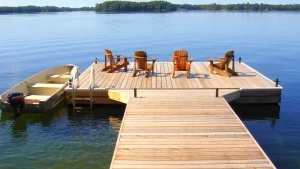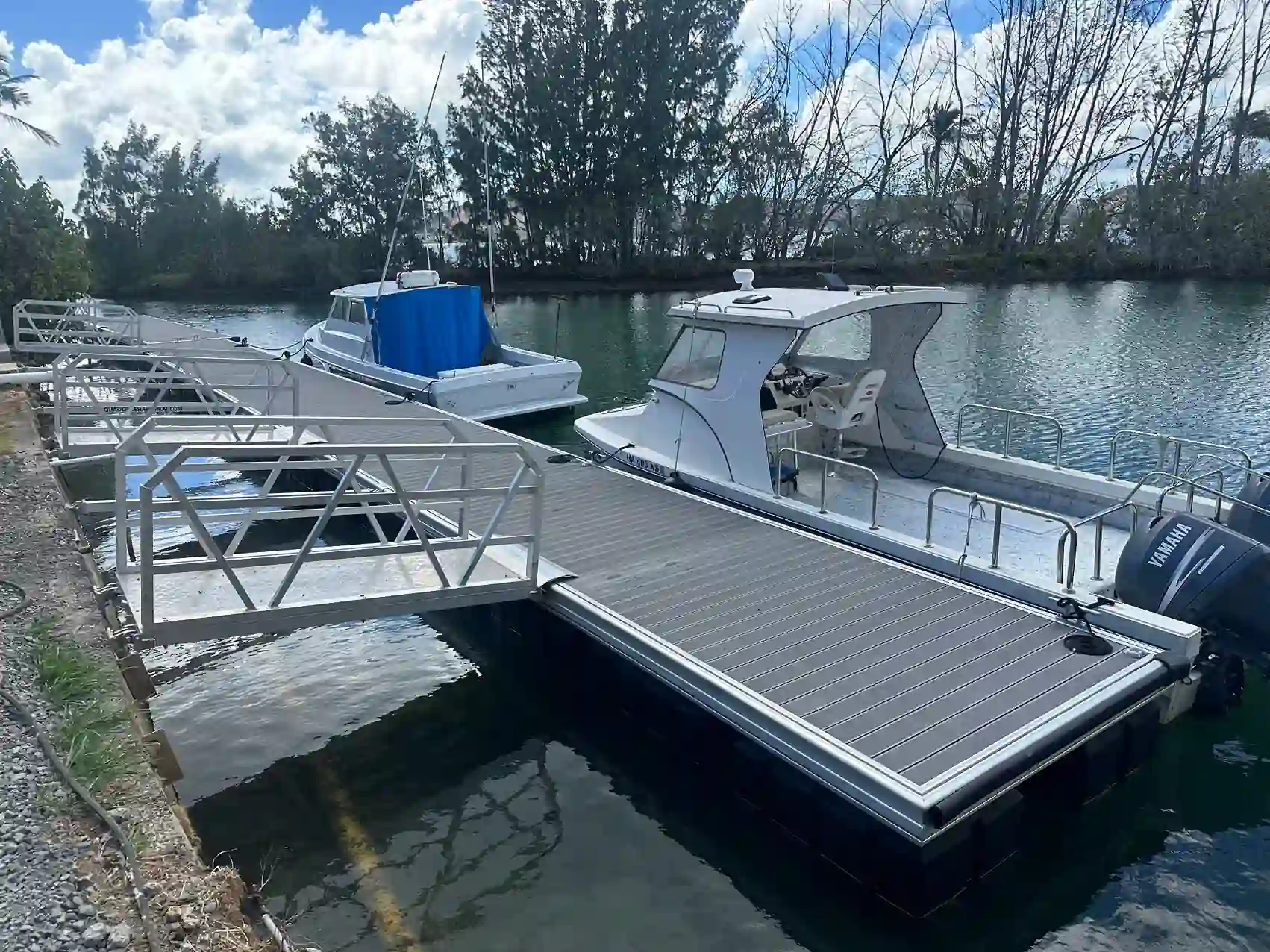In the fast-paced world of technology, it’s easy to get swept up in the excitement of new gadgets and cutting-edge inventions. However, it’s important to remember the importance of understanding the materials that form the foundation of our technological infrastructure.
This is especially true for lakeshore materials used in dock construction, as they play a critical role in ensuring durability and performance. By gaining a deep understanding of these materials, we can unlock a wealth of benefits that have the potential to revolutionize how we design and utilize docks.
From improving structural strength to enhancing environmental sustainability, the wisdom gained from years of working with lakeshore materials holds the key to creating docks that are not only technologically advanced but also capable of withstanding the ever-changing demands of the tech age.
Key Takeaways
- Lakeshore materials play a crucial role in the durability and longevity of dock structures, as they are exposed to water level changes, wave action, and erosion.
- Different types of docks require varying materials with strength and resistance to corrosion, and the selection process must balance high-quality materials with budget constraints.
- Wood, concrete, composite materials, and aluminum are popular choices for dock construction, each with their own unique characteristics and advantages.
- Technology advancements in materials testing, analysis, and monitoring systems have revolutionized dock construction and maintenance, allowing for innovative designs, proactive maintenance, and sustainable solutions.
The Importance of Understanding Lakeshore Materials
Understanding lakeshore materials is crucial for anyone involved in dock construction or maintenance due to the significant impact these materials have on the durability and longevity of the structure. Lakeshores are dynamic environments that are exposed to constant changes in water levels, wave action, and erosion. These environmental factors can exert considerable stress on the materials used in dock construction, making it imperative to select the right materials and design strategies to ensure the structure’s longevity.
One of the primary considerations when learning lakeshore materials is their resistance to water and moisture. Lakeshores are inherently wet environments, which means that any materials used in dock construction must be able to withstand prolonged exposure to water without deteriorating or losing their structural integrity. Materials such as pressure-treated wood, composite decking, and concrete are commonly used in dock construction due to their resistance to moisture and water damage.
Another important aspect of understanding lakeshore materials is their ability to withstand physical forces such as wave action and erosion. Waves can exert significant pressure on a dock structure, especially during storms or periods of high water levels. Therefore, it is crucial to select materials that can withstand these forces without deforming or breaking. Materials such as steel or aluminum are often used for pilings and support structures due to their strength and resistance to corrosion.
Common Challenges Faced With Dock Material Selection
When it comes to building a dock, selecting the right materials is crucial for its long-term durability and functionality. However, this process is not without its challenges. One of the common challenges faced when selecting dock materials is understanding the environmental factors that can impact the performance of the dock. Factors such as water salinity, temperature fluctuations, and exposure to UV radiation can all affect the lifespan and integrity of the materials used.
Another challenge is finding materials that are suitable for the specific location and intended use of the dock. Different types of docks, such as those used for recreational purposes or commercial applications, may require different materials with varying levels of strength, resistance to corrosion, and ability to withstand heavy loads.
Additionally, cost considerations can pose a challenge when selecting dock materials. Balancing the desire for high-quality, durable materials with budget constraints can be a difficult task. It is important to find materials that offer a good balance between cost and performance, ensuring that the dock is built to last while staying within budget.
Lastly, keeping up with advancements in dock material technology can be challenging. With new materials and technologies emerging, it can be overwhelming to stay informed about the latest options and determine which ones are the most suitable for a specific dock construction project.
Navigating these challenges requires careful consideration of the environmental factors, intended use, cost constraints, and advancements in material technology. By addressing these challenges, dock builders can ensure the selection of materials that will result in a durable and functional dock that meets their specific needs.

Exploring Different Types of Lakeshore Materials
When it comes to dock construction, it is essential to explore the different types of lakeshore materials available in order to make informed decisions based on the specific requirements and challenges discussed earlier. The choice of lakeshore material can have a significant impact on the durability, longevity, and overall performance of the dock. There are several options to consider, each with its own unique characteristics and advantages.
One common type of lakeshore material is wood. Wood has been used for centuries in dock construction due to its natural beauty, versatility, and strength. However, it requires regular maintenance to protect against rot, decay, and insect infestation.
Another option is concrete, which provides excellent durability and stability. It is resistant to rot and decay and can withstand harsh weather conditions. However, it can be expensive and time-consuming to install.
Alternatively, composite materials offer a combination of strength and low maintenance. These materials are typically made from a mixture of plastic and wood fibers, providing the look of wood without the need for regular upkeep. They are resistant to rot, decay, and insect damage and can withstand the elements.
Additionally, aluminum is a lightweight and corrosion-resistant option. It requires minimal maintenance and offers excellent durability.
Factors to Consider When Choosing Dock Materials
When selecting dock materials, it is essential to consider various factors that will impact the overall performance and longevity of the structure. These factors include the environment in which the dock will be installed, the intended use of the dock, and the maintenance requirements of different materials.
One important consideration is the type of water in which the dock will be located. Different materials may be more suitable for freshwater versus saltwater environments. For example, wood may be prone to rotting in saltwater, while certain metals may corrode more quickly in freshwater. Understanding the specific conditions of the lakeshore will help determine which materials are best suited for the dock.
The intended use of the dock is another crucial factor to consider. If the dock will be used for heavy-duty purposes, such as commercial fishing or boat storage, materials that can withstand constant use and heavy loads are necessary. On the other hand, a dock used primarily for recreational purposes may not require the same level of durability.
Lastly, it is important to consider the maintenance requirements of different dock materials. Some materials may require regular sealing or painting to protect against weathering, while others may be more low-maintenance. Understanding the maintenance needs of different materials will help ensure that the dock remains in good condition for years to come.
Maximizing the Benefits of Dock Material Wisdom in the Tech Age
To fully capitalize on the advantages offered by dock materials in the modern era, it is imperative to harness the knowledge and advancements of technology. The tech age has revolutionized the way we approach dock construction and maintenance, providing us with tools and resources to maximize the benefits of dock material wisdom.
One of the key ways technology can enhance dock material wisdom is through the use of advanced materials testing and analysis. With the help of sophisticated software and equipment, engineers can evaluate the performance and durability of different dock materials under various conditions. This allows for informed decision-making when selecting the most suitable materials for a specific lakeshore application.
Furthermore, technology enables us to monitor and maintain docks more efficiently. Through the use of sensors, remote monitoring systems, and data analytics, dock owners can track the condition of their structures in real-time. This proactive approach helps identify potential issues before they escalate, reducing the risk of accidents and costly repairs.
Additionally, technology plays a crucial role in enhancing the sustainability of dock materials. With the increasing focus on environmental responsibility, advancements in technology have allowed us to develop eco-friendly materials that have minimal impact on ecosystems. By leveraging these advancements, we can create docks that not only withstand the test of time but also minimize their ecological footprint.
Frequently Asked Questions
What Are the Benefits of Understanding Lakeshore Materials in the Tech Age?
Understanding lakeshore materials in the tech age provides numerous benefits. It allows for informed decision-making regarding dock materials, resulting in increased durability, longevity, and cost-effectiveness. Additionally, it enables the utilization of advanced technologies for improved performance and environmental sustainability.
What Are Some Common Challenges Faced When Selecting Dock Materials?
When selecting dock materials, common challenges include durability, maintenance requirements, environmental impact, and cost. It is crucial to assess these factors to ensure the optimal choice that balances performance and sustainability.
What Are the Different Types of Lakeshore Materials That Can Be Used for Docks?
There are several types of lakeshore materials that can be used for docks, including wood, concrete, steel, and composite materials. Each material has its own advantages and considerations, such as durability, cost, and environmental impact.
What Factors Should Be Considered When Choosing Dock Materials?
When choosing dock materials, it is important to consider factors such as durability, resistance to water damage, maintenance requirements, and environmental impact. These factors will ensure the longevity and sustainability of the dock structure.
How Can the Benefits of Dock Material Wisdom Be Maximized in the Tech Age?
In the tech age, maximizing the benefits of dock material wisdom requires integrating advanced technologies and data-driven approaches. This involves leveraging materials with enhanced durability, sustainability, and performance, while considering factors such as cost-effectiveness and environmental impact.
Conclusion
In conclusion, understanding the intricacies of lakeshore materials is crucial in the quest for innovation and efficiency in dock construction. By comprehending the composition, strengths, and weaknesses of these materials, we can make informed decisions when choosing dock materials. This knowledge, combined with the wisdom gained from years of experience, allows us to design technologically advanced, environmentally friendly, and sustainable docks. By harnessing this wisdom, we can unlock a wealth of benefits and revolutionize our dock designs in the tech age.
You May Also Like:






